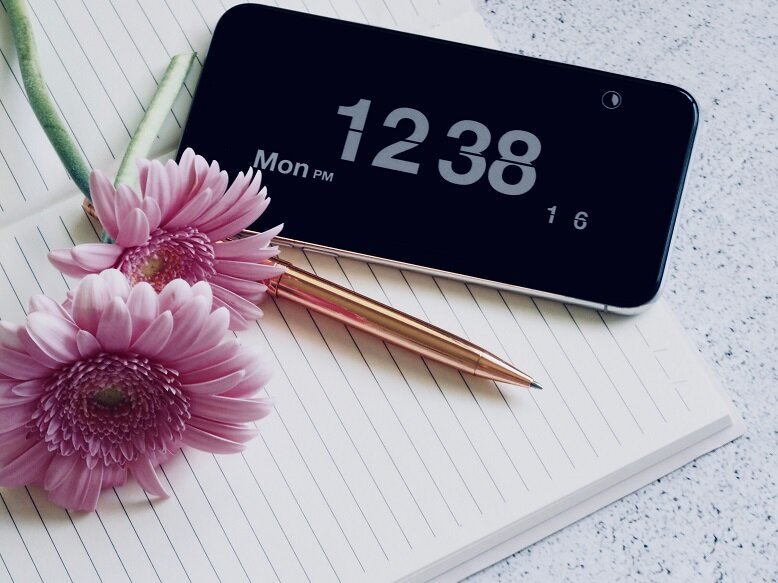Welcoming the new year means new opportunities to try and be better. But while there’s always a need to seek aid and guidance from others, our progress ultimately lies on none other than our individual efforts. To kick things off for 2020, join us as we put known self-help tips to the test to see if they’re really effective in enabling our #NewYearNewMe journey.
Have you ever heard of the Five-Second Rule? No, not the rule involving food that has fallen on the floor. I'm talking about the wellness tip that can (supposedly) change your life. How? For context, we all know that there are different kinds of procrastination. There are people who distract themselves by doing smaller, inconsequential tasks to delay doing the bigger task. Others will bury their heads in the sand and ignore it altogether. Then, there are others who get caught up in their thoughts, essentially overwhelming themselves with the idea of how big the task is when it isn’t. Of the last one, I plead guilty.
![]()
Will the five-second rule help me become more focused?
January — the start of the new decade — is the start of a new beginning for most people. I confess that I am quite an overthinker. So as one of the personal goals I've set for myself this year, I want to stop feeling overwhelmed when there’s a "herculean" task in front of me. I want to be more focused, both at work and during my time off, rather than spiralling down an emotional hurricane with the mere thought of what each task involves. It’s time to say goodbye to stressing about stress. With this, I turned to the Five-Second Rule.
What is the Five-Second Rule?
The rule was first explained by Mel Robbins in her book
The 5 Second Rule. She defines it as “a form of metacognition that beats every trick your brain plays on you to cause hesitation, overwhelm, procrastination, and overthinking." To put it simply, self-sabotage is a thing. To address this, one has to utilise the urge to work by counting down from five. The countdown creates a trigger for your body to take action.
Apparently, these five seconds are the most important in doing a task. According to Robbins, it takes your brain five seconds to kill the urge to even begin something. Essentially, the countdown from five becomes the impetus for you to start working. “If you have an instinct to work on a goal, you must physically move within five seconds or your brain will kill it,” Robbins wrote on her
blog. It sounds simple, right?
It takes some commitment
At the start of this experience, I was truly confused about how to start applying the five-second rule. Do I have to count down from five with every task I had to do? Just to see if it feels right, I tried doing it for work. To keep a sense of order, I blocked out specific times for the tasks I had to do that day. I noticed that it helped light that “fire” to work at the start. But once I got into the groove of things, the five-second rule was far from my mind.
![A notebook, pen, and laptop with coffee The Five Second Rule takes some commitment to do at the start.]()
It makes you actually do something, rather than let your mind wallow in what you had to face.
Admittedly, there were days that I’d go about things not even thinking about the five-second rule. I was still productive — or as productive as I usually am — on those days. It seems silly to count down from five before doing a task but it does work when I did it. It almost became a competition with myself, like I was in a race waiting for the go signal. The only time it didn’t work was when I didn’t want it to.
“You may have do to this several thousand times a day,” Robbins shares. The conscientious application of this rule can easily fall on the wayside. I think that this is the entire point of the practice. It helps you stop overthinking the task to be done, invigorates you to begin, and helps maintain that momentum until you’re done with everything you have to do. "It takes more energy to start than to keep doing something," Robbin shares in a
video.
It’s a familiar feeling
I’ve always been one to get sudden bursts of productivity — those moments of inspiration, you could say. There have been numerous times when I would just sit down and write an entire paper in a span of two hours. There have been instances when I felt the urge to start cleaning and just do it. When I started practising the five-second rule, it certainly gave a feeling of
déjà vu.
![Photo of a phone with clock and pink flower The Five Second Rule moves you to do it now, rather than later.]()
The best time to do it is now.
Robbins explains that the five-second rule is a tool one uses to stop your brain from thinking and start moving. According to
Inc.com, neuroscientist Antonio Damasio claims that emotional decision-making is just as important as rational and analytical decision making. Nike certainly had the right idea when they said “Just do it”.
![A laptop with a checklist written on notebook The five-second rule was the most effective for "tedious tasks".]()
Need to cross-off something on your to-do list? The five-second rule is a good place to start.
I found that this best worked for more tedious tasks, like doing chores or planning the week ahead. These are tasks that hinder my daily productivity and, when addressed, will improve my ability to focus on other tasks, so it’s best to get them out of the way. Based on my interpretation of the rule, if I could do it within five minutes, I must do it immediately. One and done, then move on to the next task. Logically, this made more sense. There's no point in delaying a task that could be completed within minutes. The "snap decision" enabled me to begin working and left little room for the stress-inducing overthinking.
The verdict: it helps but don't overthink it
Since the rule is backed by neuroscience, it really does work when applied. However, we are still subject to our personal whims. If you don’t want it to work, it won’t. There were days when I felt like I should do something and yet won’t. There were days when I did. There were days when I still got overwhelmed by the sheer amount of stuff I had to do. On those days, those five-second breaks were a welcome respite.
I think the five-second was most effective when I needed the push to start tackling tasks. If you had a solid to-do list you needed to accomplish and find it hard to even begin, this could potentially help. Once you have established your momentum, that burst of energy to keep working will have you crossing off your to-do list one by one easily.
It really was more of a tool to stop myself from overthinking and actually start doing
something. If you have a goal in mind that you want to achieve quicker, try the five-second rule. Are you in a time of change, like working towards a promotion or a really big business deal? Use the five-second rule. If you want to change your mindset, the way I did at the start, start with the five-second rule. Whether it’s trying to be
productive or becoming a
morning person, the five-second rule may be the key to actually taking that first step.
Next, see if doing 30 minutes of exercise everyday will be good for the body and mind.









.png)


